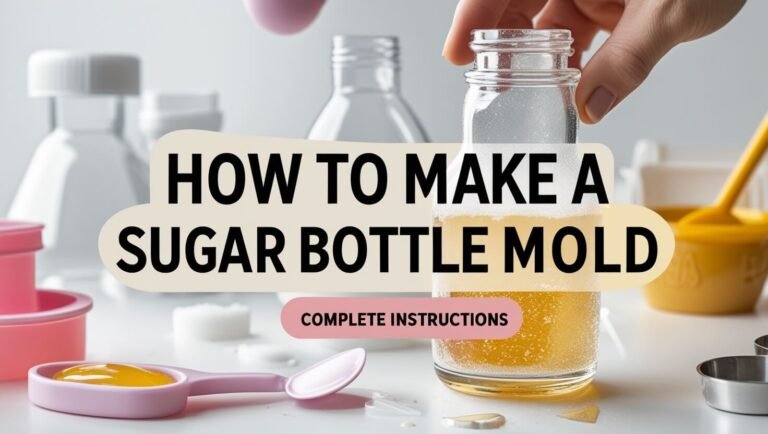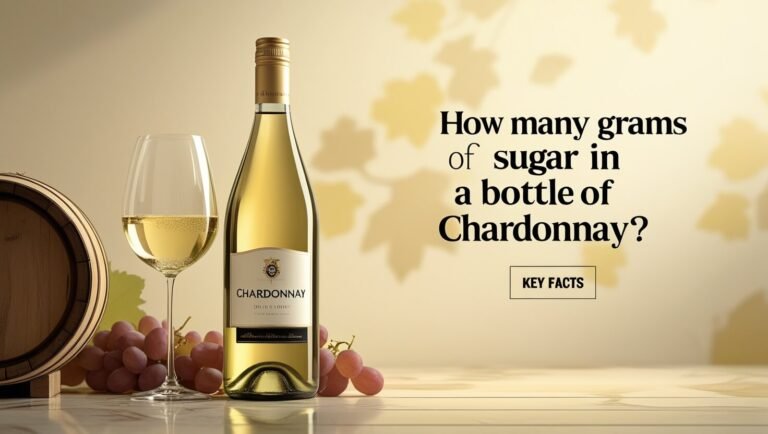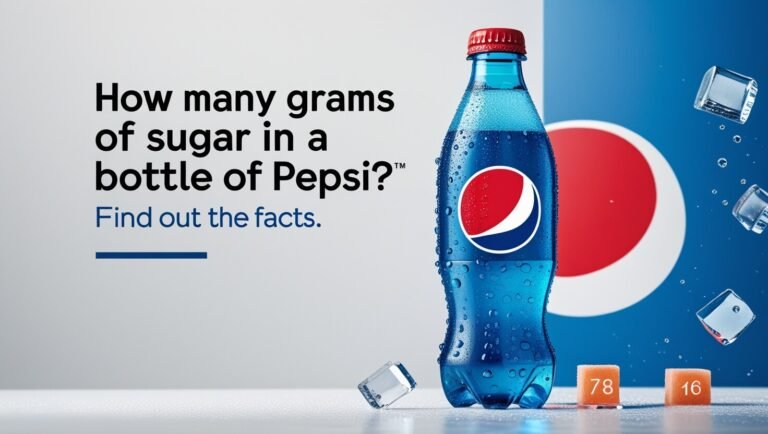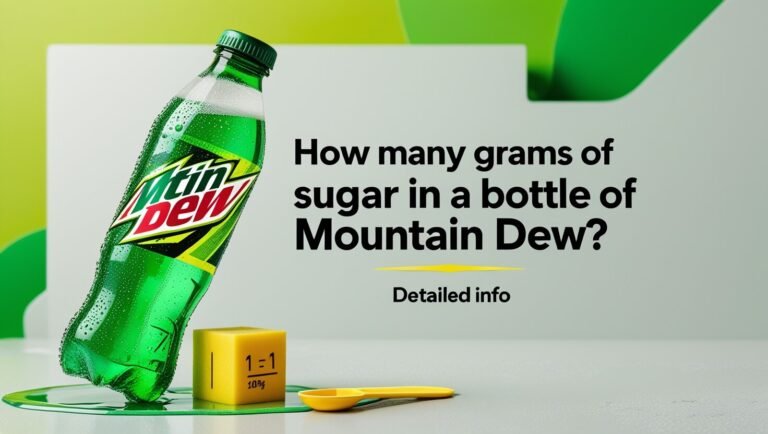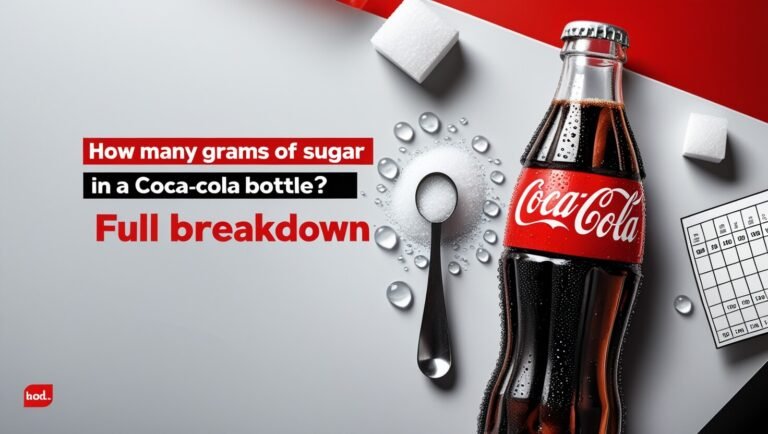Why Is There a Bottle With 0 Tsp of Sugar? Find Out Here
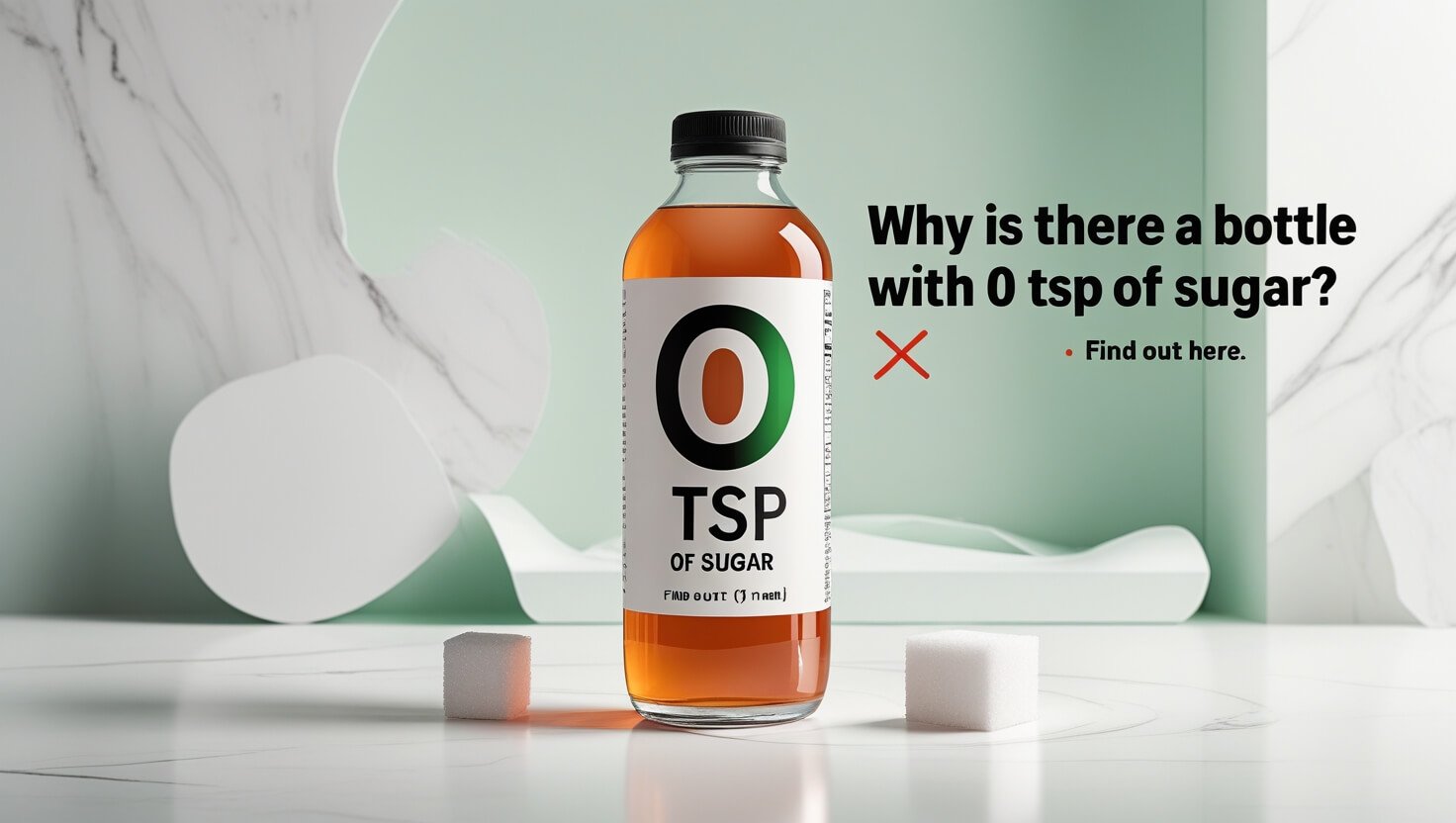
Ever wondered about bottles with 0 tsp of sugar? With more people watching their sugar intake, sugar-free drinks are becoming popular. They offer a healthier choice, but what’s behind their appeal? Let’s dive into the world of sugar-free drinks and their health benefits.
People choose sugar-free drinks for their health perks. But why do some bottles have 0 tsp of sugar? Food labels don’t always show added sugar amounts. So, we need to be smart about what we drink. In this article, we’ll explore sugar-free drinks and their benefits. This will help you make better choices and understand the mystery of 0 tsp sugar bottles.
The Science Behind Zero Sugar Labels
Choosing a healthy drink means understanding zero sugar labels. These labels show the total sugars, including added and natural ones. This knowledge leads many to pick zero calorie drinks for a sugar-free life.
Zero sugar labels often mean the drink has natural or artificial sweeteners. These can change the drink’s nutritional value. For instance, some drinks use stevia or erythritol, which don’t raise blood sugar levels much.
Chemical Composition of Sugar-Free Drinks
The makeup of sugar-free drinks varies by sweetener. You might find:
- Sucralose
- Aspartame
- Acesulfame potassium
- Stevia
- Erythritol
Natural vs. Artificial Sweeteners
Natural sweeteners like stevia are popular for their natural appeal. Artificial sweeteners, though, can spark debate. Yet, many have been tested and deemed safe.
Caloric Content Analysis
Zero sugar drinks are low in calories, making them appealing for weight management. With daily sugar limits at 50 grams, these drinks help stay within those limits.
| Drink Type | Calories per Serving | Added Sugars per Serving |
|---|---|---|
| Soda | 150-200 | 40-50 grams |
| Sugar-Free Soda | 0-5 | 0 grams |
| Juice | 100-150 | 20-30 grams |
| Sugar-Free Juice | 0-5 | 0 grams |
FDA Regulations on Sugar Content Labels
The FDA requires food labels to list the total amount of sugars. But, they don’t have to list the amount of added sugars. This rule affects how we choose low sugar drink options and zero sugar beverage choices. Knowing the FDA’s sugar labeling rules is key.
The FDA says food packaging must clearly show all required info. The size of this information must be at least one-sixteenth inch high. These rules help ensure we get clear info about sugar in our food and drinks.
For zero sugar beverage choices, it’s important to know some drinks are exempt. For example, some bottles made before October 31, 1975, don’t have to follow size rules. Also, small packages with less than 3 square inches of area don’t need to follow all size rules but must show info at least one-thirty-second inch high.
To choose wisely, look for these on food labels:
- Total amount of sugars
- Serving size
- Number of servings per container
By knowing the FDA’s sugar labeling rules, we can make better diet choices. We can pick zero sugar beverage choices or low sugar drink options that fit our health goals.
Sugar Substitutes in Modern Beverages
More people are choosing a sugar-free lifestyle. This has led to a rise in demand for sugar substitutes. These alternatives include artificial sweeteners and plant-based options.
Stevia is a big player in the sugar substitute market, with sucralose leading the way. About 60% of sweetener sales are for drinks. This shows a clear preference for sugar-free beverages. Adopting a sugar-free lifestyle is good for health and the environment, as it cuts down on sugarcane use.
Popular Artificial Sweeteners
- Sucralose
- Stevia
- Aspartame
Plant-Based Sugar Alternatives
- Honey
- Maple syrup
- Coconut sugar
These substitutes vary in sweetness. Stevia is 200-300 times sweeter than sugar. Sucralose is even sweeter, at 600 times. Knowing this helps makers create drinks that are both tasty and sugar-free.
| Sugar Substitute | Sweetness Intensity |
|---|---|
| Stevia | 200-300 times sweeter than sugar |
| Sucralose | 600 times sweeter than sugar |
| Aspartame | 200 times sweeter than sugar |
Why Is There A Bottle With 0 Tsp Of Sugar?
Ever thought, why is there a bottle with 0 tsp of sugar? It’s because of sugar substitutes or natural sweeteners. These let makers create sugar-free drink options. They taste like sugar but don’t add calories.
Some makers use stevia or monk fruit to get a 0 tsp sugar label. Others pick sucralose or aspartame. These choices help make many sugar-free drinks, like sodas and energy drinks.
Here are some key facts about sugar-free drinks:
- They can be made with natural sweeteners or sugar substitutes
- They often have fewer calories than traditional sugary drinks
- They can be a good option for those looking to reduce their sugar intake
In conclusion, bottles with 0 tsp of sugar aren’t mistakes. They show the use of sugar substitutes or natural sweeteners. These sugar-free drinks are perfect for those wanting a low-calorie choice instead of sugary drinks.
| Drink Type | Sugar Content | Calories |
|---|---|---|
| Soda | 39 grams | 140 |
| Sugar-Free Soda | 0 grams | 0 |
| Energy Drink | 27 grams | 120 |
| Sugar-Free Energy Drink | 0 grams | 10 |
Sugar-Free Beverage Manufacturing Process
Making sugar-free drinks is a detailed process that needs careful planning and quality checks. As more people focus on health, the need for sugar-free drinks grows. These drinks are a healthy alternative to sugary drinks. They help keep calorie intake low and reduce the risk of obesity and related diseases.
Companies use different methods to make sugar-free drinks that taste good and are safe. They use natural and artificial sweeteners like stevia and aspartame. These sweeteners add sweetness without the calories. The quality control in making these drinks is strict. It makes sure the final product is safe and meets quality standards.
Formulation Techniques
Some common ways to make sugar-free drinks include:
- Blending natural and artificial sweeteners for the right taste
- Adding flavor enhancers to improve taste and smell
- Adjusting acidity and pH levels for stability and safety
Quality Control Methods
Manufacturers use several quality control methods to ensure sugar-free drinks are safe and good. These include:
- Testing the product for contaminants and impurities regularly
- Watching the production process to avoid mistakes
- Following good manufacturing practices (GMPs) for consistency and quality
By using these techniques and methods, makers can create top-notch sugar-free drinks. These drinks offer the benefits of zero sugar beverages as a healthy choice instead of sugary drinks.
Health Effects of Zero Sugar Drinks
Choosing a sugar-free lifestyle can help with weight management and better dental health. It’s key to pick low sugar drinks to lower disease risks. The Dietary Guidelines for Americans say kids under 2 should have no added sugars. For those 2 and older, it’s less than 10% of daily calories.
Less sugar means better health, like weight loss and lower risks of type 2 diabetes and heart disease. The American Heart Association suggests women have no more than 25 grams (6 teaspoons) of added sugar daily. Men should not have more than 36 grams (9 teaspoons) daily. Benefits of a sugar-free life include:
- Weight management
- Improved dental health
- Reduced risk of chronic diseases, such as type 2 diabetes and heart disease
- Lower risk of cavities and gout
It’s important to check what’s in low sugar drinks. Artificial sweeteners like aspartame and sucralose are used instead of sugar. But, their long-term effects are not fully known. Natural sugars in fruits and veggies are better. By choosing wisely, you can lower disease risks and boost your health.
| Added Sugar Intake | Recommended Daily Limit |
|---|---|
| Women | 25 grams (6 teaspoons) |
| Men | 36 grams (9 teaspoons) |
Market Trends in Sugar-Free Beverages
The market for sugar-free drinks is growing fast. This is because more people want healthier choices. They are looking for zero sugar beverage choices to avoid the health risks of sugary drinks. These options help keep calorie intake low and reduce the risk of chronic diseases.
Low-sugar seltzers and natural sweeteners like stevia and monk fruit are becoming popular. Brands like White Claw and Smirnoff are now making sugar-free and low-sugar drinks. Here are some key stats on the sugar-free beverage market:
| Category | 2020 Sales | 2022 Sales |
|---|---|---|
| Sugar-Free Seltzers | $1.2 billion | $2.5 billion |
| Low-Sugar Beverages | $500 million | $1.1 billion |
| Natural Sweeteners | $200 million | $500 million |
As more people want sugar-free drinks, we’ll see new products and flavors. The benefits of zero sugar beverages are clear. With more zero sugar beverage choices available, it’s an exciting time for those seeking healthier drinks.
Sugar-Free vs. Regular Drinks Comparison
Choosing between sugar-free drinks and regular ones involves several factors. Taste is a big difference. Sugar-free drinks might taste different because of artificial sweeteners. This can be a problem for some.
Regular drinks, on the other hand, have a lot of sugar. This is a worry for those wanting a healthier choice.
Cost is another thing to think about. Sugar-free drinks and regular ones are usually the same price. But, some sugar-free drinks can cost more. This is because they use natural sweeteners.
Taste Differences
The taste of sugar-free drinks can change a lot. This depends on the sweetener used. Artificial sweeteners like aspartame and sucralose can taste bitter or metallic. This might not be liked by everyone.
Regular drinks, with sugar, taste sweeter. This is because sugar adds a rich flavor.
Cost Analysis
Looking at the cost, sugar-free and regular drinks are often the same price. But, some sugar-free drinks can be pricier. This is because they use natural sweeteners or premium ingredients.
Whether to choose a sugar-free drink or a regular one depends on personal taste and needs. For a healthier option, sugar-free drinks are a good choice.
Reading Nutrition Labels Correctly
Choosing the right low sugar drink options and zero sugar beverage choices starts with reading labels well. The Nutrition Facts label tells you about the product’s nutrients. This includes added sugars, sodium, and fiber.
To understand the label, check the % Daily Value (%DV) for each nutrient. A %DV over 20% is high, and under 5% is low. For instance, a 30% %DV for sugar means one serving has 30% of your daily sugar intake.
Here are important things to look for on a nutrition label:
- Serving size: Make sure you’re comparing the same sizes.
- Added sugars: Pick products with less than 8 grams per serving.
- Sodium: Opt for products with less than 5% of the daily sodium intake.
- Fiber: Choose products with at least 3 grams of fiber per serving.
By carefully reading nutrition labels, you can pick the best low sugar drink options and zero sugar beverage choices for you.
Zero Sugar Drinks for Different Dietary Needs
Choosing a sugar-free lifestyle can lower the risk of chronic diseases and boost overall health. Zero sugar drinks are a great way to do this. They’re perfect for people with diabetes or those on a keto diet.
For those with diabetes, diabetic-friendly options help keep blood sugar levels in check. Keto-compatible choices are good for keto dieters, helping them stay in ketosis. Sports performance drinks are also great for athletes, providing needed electrolytes and hydration.
Zero sugar drinks offer many benefits and are a smart swap for sugary ones. They help cut down sugar intake and support a healthier lifestyle. Some top picks include:
- Infused water
- Unsweetened tea
- Black coffee
| Dietary Need | Recommended Drink |
|---|---|
| Diabetes | Diabetic-friendly options, such as unsweetened tea or infused water |
| Keto diet | Keto-compatible choices, such as unsweetened coffee or tea |
| Sports performance | Sports performance drinks, such as electrolyte-rich beverages |
Adding zero sugar drinks to your daily routine can lead to a healthier lifestyle. With so many choices, finding the right drink for your needs is easy.
Common Myths About Zero Sugar Beverages
Many people wonder about sugar-free drinks. They ask, why is there a bottle with 0 tsp of sugar? These drinks use artificial sweeteners to taste sweet without sugar. For example, Coke Zero has 0 calories and no sugar in a 12-ounce can.
Some think zero sugar drinks are completely safe. But, studies show drinking too many can lead to weight gain. Diet sodas have also been linked to bigger waists over time.
Here are some important facts:
- A 6-month study showed drinking diet drinks or water can help lose 2–2.5% of body weight.
- Another study found people drinking artificial sweeteners lost 13 pounds, while water drinkers lost 9 pounds in 12 weeks.
- A 14-year study found drinking artificial sweeteners can increase the risk of type 2 diabetes.
It’s important to know the truth about why is there a bottle with 0 tsp of sugar? and sugar-free drinks. By understanding these drinks, we can make better choices for our health.
| Beverage | Calories | Sugar (tsp) |
|---|---|---|
| Chocolate milk (whole) | 400 | 12 |
| Cranberry cocktail | 200 | 12 |
| Apple juice | 180 | 11 |
| Regular soda | 140 | 10 |
| Unsweetened iced tea | 2 | 0 |
| Water (stil or carbonated) | 0 | 0 |
Final Thoughts
Zero sugar beverages are a refreshing and healthy alternative to sugary drinks. They offer a way to manage health and reach fitness goals. These products are great for many dietary needs.
Too much sugar is bad for our health. That’s why choosing wisely is key. Zero sugar drinks help us live healthier lives and support better nutrition for everyone.
The future of zero sugar drinks looks bright. As people want healthier options, these drinks will become more common. By making smart choices, we can all help create a healthier community.

